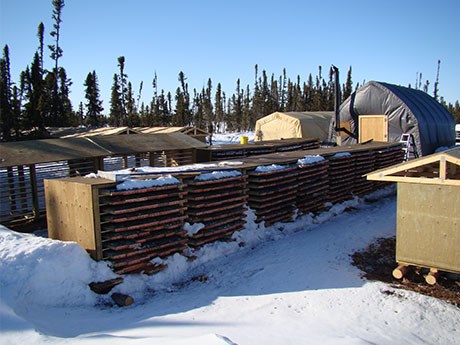As of May 1, approximately 100 plans and permits pursuant to the amended Mining Act regulations were approved, according to the Ontario Ministry of Northern Development and Mines.
The new rules requiring prospectors and exploration companies to submit plans for early exploration work and apply for permits prior to undertaking more intensive exploration came into force on a voluntary basis November 1 and became mandatory April 1st.
“We’re really encouraged by the number of applications we’re receiving because it translates into exploration investment and activity over the next two to three years,” said Rob Merwin, director of the Ministry’s Mining Act Modernization Secretariat.
On top of the 100 plans and permits given a green light to date, “we have more applications we are working to process, and those numbers are pretty much as we anticipated, which again reflects the fact that there’s still confidence in Ontario as a place to invest.”
The Ministry is coping well with the volume, “but it’s a new process, so there’s always going to be a need to provide further guidance to make sure that the applications are complete,” added Merwin.
The five-month transitional period beginning November 1 provided Ministry staff with an opportunity to debug the process.
The most common problem concerns deficiencies in the maps proponents are required to submit, said Stephen De Vos, manager of exploration and development, “but we’re working closely with proponents and we’ve already started to see a reduction in that type of occurrence.”
In some cases, instructions have been updated and forms have been tweaked to clarify requirements.
“My suggestion,” said De Vos, “would be for proponents to keep going back to the web site to get the refreshed instructions and forms each time they apply because we’re making changes and being responsive to the issues (industry) is raising.”
The Ministry is making every effort to streamline the process, said Merwin.
For example, “rather than return an application that’s incomplete and requiring the proponent to resubmit, mineral exploration and development consultants are picking up the phone, talking with (industry representatives) and saying, ‘We just need this little piece of information. Can we fill it in over the phone, or can you submit a map on this scale and with this information.’”
The Ministry was “very proactive” about building aboriginal capacity to review and comment on applications, but “First Nations are experiencing the same growing pains as everyone involved in this new transformational process,” said Merwin.
For the most part, applications are being dealt with and approved expeditiously. Others, though “rare and to be expected”, are more challenging, but “we think the new regime provides certainty and clarity on what is expected.
“Everyone is making a concerted and best effort to make this work and we are listening very carefully to respond where there are opportunities to tweak the process.”



.jpg;w=120;h=80;mode=crop)